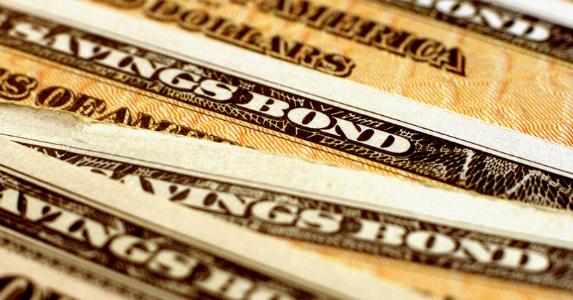What can we anticipate? What should we
expect? What’s the likely high, low, and average value? Whether the quantity in
question is height, weather, or personal income, extremes are more likely to
make it into the headlines than are more informative averages. “Who makes the
most money,” for example, is generally more attention-grabbing than “what is the
average income” (although both terms are always suspect because—surprise—like
companies, people lie about how much money they make).
Even more informative than averages,
however, are distributions. What, for example, is the distribution of all
incomes and how spread out are they about the average? If the average income in
a community is $100,000, this might reflect the fact that almost everyone makes
somewhere between $80,000 and $120,000, or it might mean that a big majority
earns less than $30,000 and shops at Kmart, whose spokesperson, the (too)
maligned Martha Stewart, also lives in town and brings the average up to
$100,000. “Expected value” and “standard deviation” are two mathematical notions
that help clarify these issues.
An expected value is a special sort of
average. Specifically, the expected value of a quantity is the average of its
values, but weighted according to their probabilities. If, for example, based on
analysts’ recommendations, our own assessment, a mathematical model, or some
other source of information, we assume that 1/2 of the time a stock will have a
6 percent rate of return, that 1/3 of the time it will have a -2 percent rate of
return, and that the remaining 1/6 of the time it will have a 28 percent rate of
return, then, on average, the stock’s rate of return over any given six periods
will be 6 percent three times, -2 percent twice, and 28 percent once. The
expected value of its return is simply this probabilistically weighted
average—(6% + 6% + 6% + (-2%) + (-2%) + 28%)/6, or 7%.
Rather than averaging directly, one
generally obtains the expected value of a quantity by multiplying its possible
values by their probabilities and then adding up these products. Thus .06 × 1/2
+ (-.02) × 1/3 + .28 × 1/6 = .07, or 7%, the expected value of the above stock’s
return. Note that the term “mean” and the Greek letter µ (mu) are used
interchangeably with “expected value,” so 7% is also the mean return,
µ.
The notion of expected value clarifies
a minor investing mystery. An analyst may simultaneously and without
contradiction believe that a stock is very likely to do well but that, on
average, it’s a loser. Perhaps she estimates that the stock will rise 1 percent
in the next month with probability 95 percent and that it will fall 60 percent
in the same time period with probability 5 percent. (The probabilities might
come, for example, from an appraisal of the likely outcome of an impending court
decision.) The expected value of its price change is thus (.01 × .95) + (-.60) ×
.05), which equals -.021 or an expected loss of 2.1%. The lesson is that the
expected value, -2.1%, is not the value expected, which is 1%.
The same probabilities and price
changes can also be used to illustrate two complementary trading strategies, one
that usually results in small gains but sometimes in big losses, and one that
usually results in small losses but sometimes in big gains. An investor who’s
willing to take a risk to regularly make some “easy money” might sell puts on
the above stock, puts that expire in a month and whose strike price is a little
under the present price. In effect, he’s betting that the stock won’t decline in
the next month. Ninety-five percent of the time he’ll be right, and he’ll keep
the put premiums and make a little money. Correspondingly, the buyer of the puts
will lose a little money (the put premiums) 95 percent of the time. Assuming the
probabilities are accurate, however, when the stock declines, it declines by 60
percent, and so the puts (the right to sell the stock at a little under the
original price) become very valuable 5 percent of the time. The buyer of the
puts then makes a lot of money and the seller loses a lot.
Investors can play the same game on a
larger scale by buying and selling puts on the S&P 500, for example, rather
than on any particular stock. The key to playing is coming up with reasonable
probabilities for the possible returns, numbers about which people are as likely
to differ as they are in their preferences for the above two strategies. Two
exemplars of these two types of investor are Victor Niederhoffer, a well-known
futures trader and author of The Education of a
Speculator , who lost a fortune by selling puts a few years ago, and
Nassim Taleb, another trader and the author of Fooled by
Randomness, who makes his living by buying them.
For a more pedestrian illustration,
consider an insurance company. From past experience, it has good reason to
believe that each year, on average, one out of every 10,000 of its homeowners’
policies will result in a claim of $400,000, one out of 1,000 policies will
result in a claim of $60,000, one out of 50 will result in a claim of $4,000,
and the remainder will result in a claim of $0. The insurance company would like
to know what its average payout will be per policy written. The answer is the
expected value, which in this case is ($400,000 × 1/10,000) + ($60,000 ×
1/1,000) + ($4,000 × 1/50) + ($0 × 9,979/10,000) = $40 + $60 + $80 + $0 = $180.
The premium the insurance company charges the homeowners will no doubt be at
least $181.
Combining the techniques of
probability theory with the definition of expected value allows for the
calculation of more interesting quantities. The rules for the World Series of
baseball, for example, stipulate that the series ends when one team wins four
games. The rules further stipulate that team A plays in its home stadium for
games 1 and 2 and however many of games 6 and 7 are necessary, whereas team B
plays in its home stadium for games 3, 4, and, if necessary, game 5. If the
teams are evenly matched, you might be interested in the expected number of
games that will be played in each team’s stadium. Skipping the calculation, I’ll
simply note that team A can expect to play 2.9375 games and team B 2.875 games
in their respective home stadiums.
Almost any situation in which one can
calculate (or reasonably estimate) the probabilities of the values of a quantity
allows us to determine the expected value of that quantity. An example more
tractable than the baseball problem concerns the decision whether to park in a
lot or illegally on the street. If you park in a lot, the rate is $10 or $14,
depending upon whether you stay for less than an hour, the probability of which
you estimate to be 25 percent. You may, however, decide to park illegally on the
street and have reason to believe that 20 percent of the time you will receive a
simple parking ticket for $30, 5 percent of the time you will receive an
obstruction of traffic citation for $100, and 75 percent of the time you will
get off for free.
The expected value of parking in the
lot is ($10 × .25) + ($14 × .75), which equals $13. The expected value of
parking on the street is ($100 × .05) + ($30 × .20) + ($0 × .75), which equals
$11. For those to whom this is not already Greek, we might say that µL, the mean costs of parking in the lot, and µS, the mean cost of parking on the street, are $13 and
$11, respectively.
Even though parking in the street is
cheaper on average (assuming money was your only consideration), the variability
of what you’ll have to pay there is much greater than it is with the lot. This
brings us to the notion of standard deviation and stock risk.









